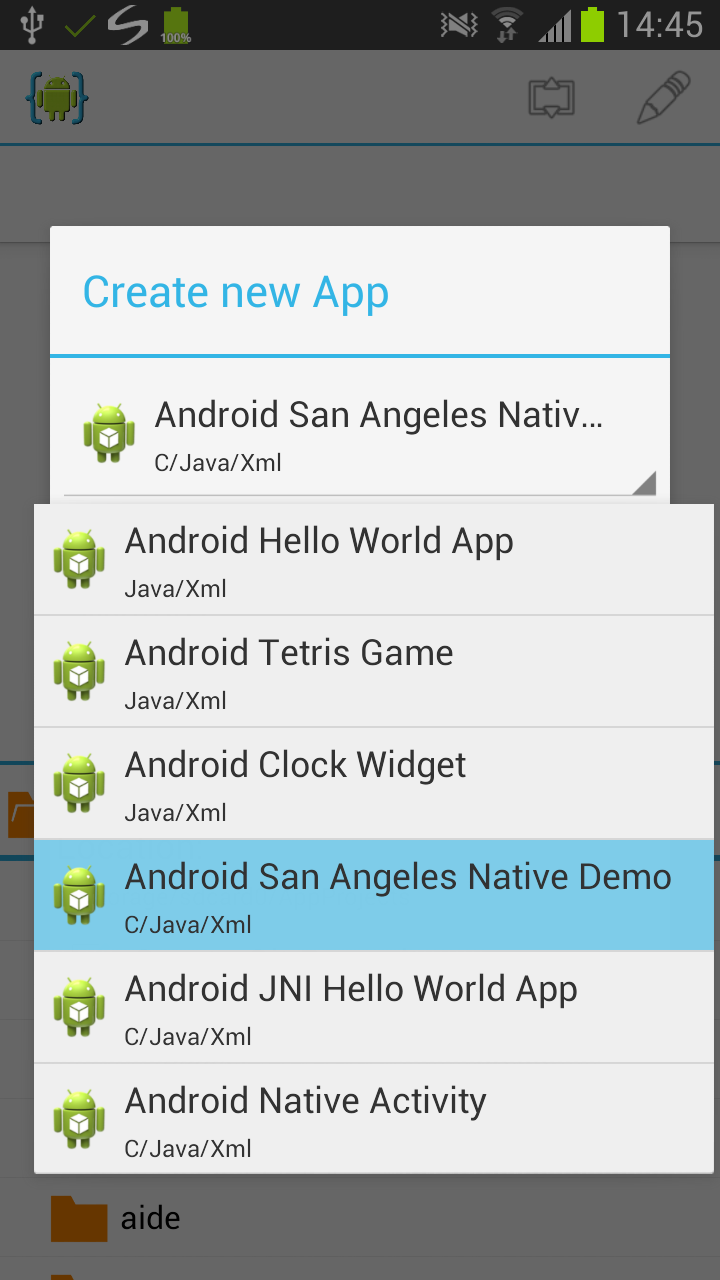

Once they've finished processing, they'll appear in the Crashes tab partially symbolicated. This button tells App Center to process the crashes and symbolicate them as fully as possible with the symbols on file. If you can't upload the symbols, you can mark them as Ignored by selecting rows in the table and clicking the Ignore versions button. The required symbols are uploaded from this page if you have access to them.
#ANDROID NDK APP ANDROID#
When App Center doesn't have all the symbol files to fully symbolicate crash reports, the crashes are listed in the Unsymbolicated tab. android / ndk Public Notifications Fork 261 Star 1. This call allocates space on our backend for your file and returns a symbol_upload_id and an upload_url property.Ĭurl -X POST ' Trigger a POST request to the symbol_uploads API.The body of the first API call should set symbol_type to Breakpad.
#ANDROID NDK APP UPDATE#
The process for uploading symbols through the API involves a series of three API calls: one to allocate space on our backend, one to upload the file, and one to update the status of the upload.

#ANDROID NDK APP HOW TO#
To learn how to report NDK crashes, refer to the Android SDK documentation for Android apps, or Unity SDK documentation for Unity apps. To get the memory addresses translated for your Android NDK app, you must upload application symbols for each build. They don’t show class names, methods, file names, and line numbers which are needed to read and understand the crashes. The stack traces may only contain memory addresses. You can use the Google Breakpad client library for your Android apps to receive valid stack traces in native code. Stb_image.cpp # Cross-platform image loadingįontManager.Android NDK allows you to implement parts of your Android apps using C and C++. # Provides a relative path to your source file(s). # Gradle automatically packages shared libraries with your APK.Īdd_library( # Sets the name of the library. # You can define multiple libraries, and CMake builds them for you. # or SHARED, and provides the relative paths to its source code. # Creates and names a library, sets it as either STATIC # Sets the minimum version of CMake required to build the native library.ĭ:/Source/C++/Contrib/freetype-2.11.1/include Below is the CMakeLists file used to build the project: # For more information about using CMake with Android Studio, read the

Since my project was a game engine, I chose to use the 'Game Activity' template. So I took that functionality out, along with some other things such as sound and physics to make it as simple as possible. It was originally coded in Visual Studio and used GLFW which also handled inputs from the mouse and keyboard but that didn't seem to make sense for an Android app when I began using Android Studio. I am trying to port my game engine to android.


 0 kommentar(er)
0 kommentar(er)
